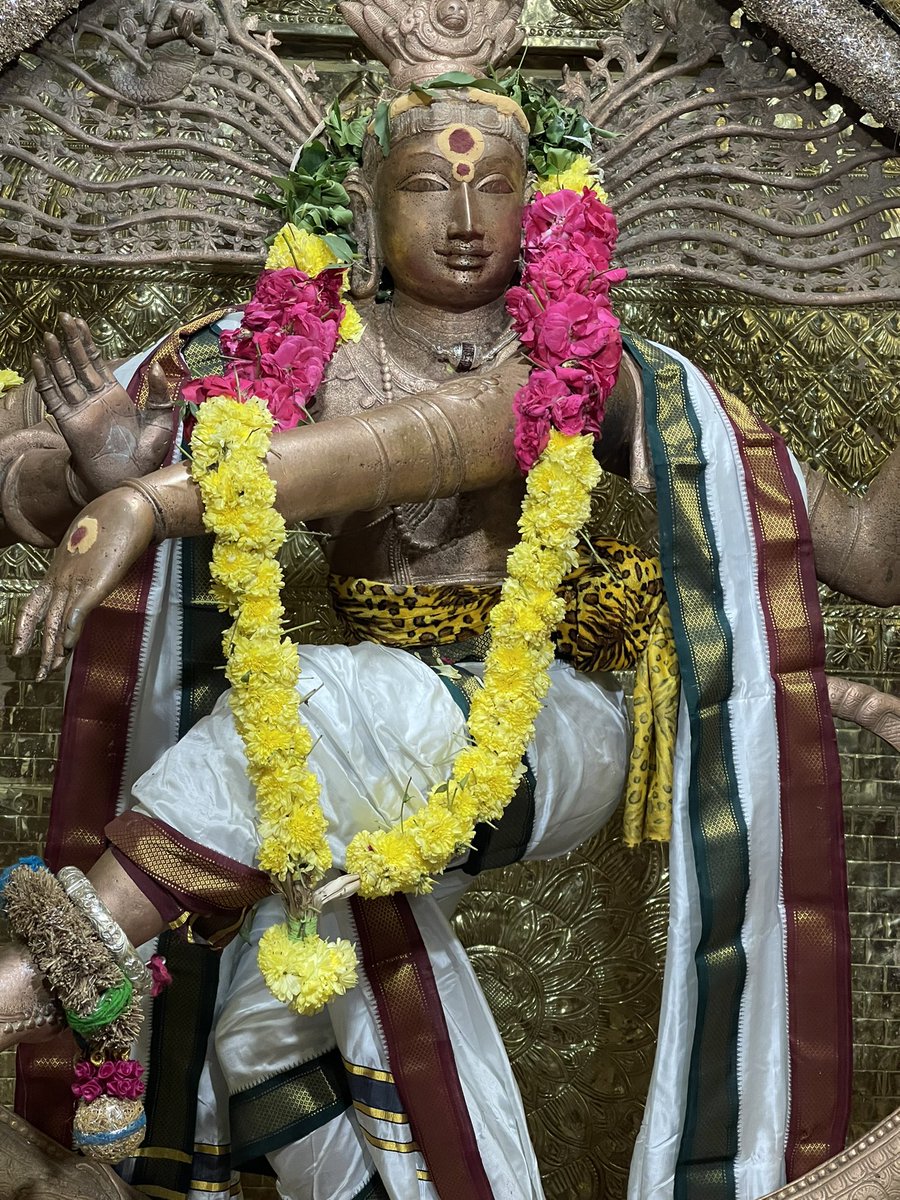#thread Sembian Mahadevi was a 10th cent CE Chola Queen who built/renovated more than 14 temples. She was the queen of Gandaraditya Chola and mother of king Uttama Chola. She built temples, established Veda salas, gave land grants even after she was widowed. #tamizhtales 

Marxist distortians like Romila Thapar will tell you that Hindu queens had no power, and that they committed Sati after their husbands died. But here is a 10th century Queen who not only built/renovated temples, she ensured a common style to all of them and installed inscriptions 

Today we visited the Uma Maheshwarar temple built by Sembian Mahadevi in a village called Konerirajapuram, a little away from Kumbhakonam. Surrounded by lush green paddy fields, the temple today is known for the 9 feet Nataraja commissioned by Sembian Mahadevi. #tamizhtales 

The temple structure has undergone many changes since Sembian Mahadevi first built it, but the core of the temple remains as she built it. The temple is much smaller and simpler compared to the later Chozha temples, but has many features that are seen in later temples as well. 

The temple houses excellent Murtis of Lord Shiva as Nataraja, Lord Shiva as Lingodbhava and sage Agastya in the Devkoshthas or niches on the temple walls. #tamizhtales 





The main Shivalinga in the Garbhgriha is worshipped as UmaMaheshwarar, as the temple was built by Sembian Mahadevi in memory of her husband, Gandaraditya. In the inscription, she refers to herself as Sri Gandaraditta deva tam-pirattiyar (beloved of Shri Gandaraditya) #tamizhtales 

But the highlight of the temple are the magnificent bronze Murtis of Shri Nataraja and his consort, Devi Parvati as Siva Kami Sundari. Commissioned by Sembian Mahadevi more than a thousand years ago, the Murtis glow like they were polished yesterday! #tamizhtales 

So exquisite are the Murtis that there is a belief that no human hand could have made them. The story goes that the size of the Murti was so big that the sthapaty couldn’t get the wax model cast right. He was worried when an old couple appeared and pestered him for a drink. 

Even when he asked them to go away, they wouldn’t budge. In frustration, he asked them to drink the molten mixture of Panchloha that was ready to be poured into the cast. The couple drank the hot molten metal, and in their place stood two perfect bronze Murtis! #tamizhtales 

• • •
Missing some Tweet in this thread? You can try to
force a refresh



















